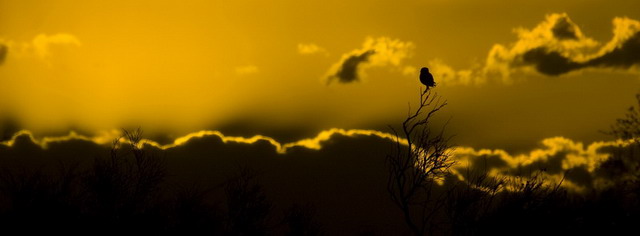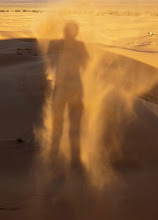In Analamazoatra and Mantadia we saw lemurs from three (of the five exisiting) families. Cheirogaleidae or mouse lemurs (tiny nocturnal lemurs) of which we only got fleeting glimpses and no decent pics (other than of eyes shining in the dark). The Lemuridae or true lemurs whose body posture is mainly quadrupedal and include Catta and Bamboo lemurs (from a previous post) as well as these Common Brown Lemurs Eulemur fulvus.
En Analamazoatra y Mantadia vimos representantes de tres de las cinco familias de lemures. Cheirogaleidae o lemures ratón (diminutos y nocturnos), los cuales solo pudimos ver fugazmente y aparte de alguna foto de ojos brillando en la oscuridad, pude hacer poco más. También los Lemuridae o lemures típicos que suelen moverse de forma cuadrúpeda, e incluyen a los lemures catta y lemures del bambú (que aparecen en una entrada anterior del blog) y también a estos lemures pardos Eulemur fulvus.
The third family is the Indridae, all of which are great jumpers, have very long and powerful hindlimbs (35% longer than forelimbs) and tend to move in a more vertical posture through the trees. This family includes sifakas, like these Diademed Sifakas Propithecus diadema.
La tercera familia es la de los Indridae, que se caracteriza por lemures saltadores con extremidades posteriores largas y fuertes (un 35% más largas que las anteriores) y por moverse de forma más vertical entre los árboles. Esta familia incluye a los sifakas, como estos sifakas diademados Propithecus diadema.
And of course the mythical Indri. This is the largest existing lemur and is the source of many different malagasy myths. It's gasy name is Babakoto which means 'ancestor of man', although it is also sometimes translated as 'father' (baba) 'little boy' (koto), in reference to the myths of children adopted by indris or of their wailing call which is said to resemble that of a father who has lost his son in the forest...
Y por supuesto, el mítico indri. Es el lemur de mayor tamaño y está rodeado de leyendas. Su nombre en malgache es Babakoto, que significa 'antepasado del hombre', aunque a veces se traduce también como 'padre' (baba) 'niño pequeño' (koto), en relación a historias de niños perdidos adoptados por indris o al canto del indri (que se supone asemeja al grito de un padre que ha perdido a su hijo en el bosque)...
The Indris in Analamazoatra (above) are habituated to man's presence. In Mantadia, where the real wild Indris live, these are much larger, darker, and harder to see...
Los indris de Analamazoatra (como los de arriba) están bastante acostumbrados al hombre. En Mantadia, donde habitan indris realmente salvajes, son mucho más grandes, oscuros y bastante más difíciles de ver...
...and where we were lucky enough not just to see several groups, but also to find a female carrying a young (about 6 month old) baby.
...donde tuvimos la suerte, no sólo de ver varios grupos, sino también de encontrar una hembra cargando una cría de unos 6 meses de edad.
Mada III: all creatures strange and small
Madagascar's wildlife is definately strange, even when you drop down on all fours and start looking at the invertebrates...
Las peculiaridades de la fauna malgache no se limitan a los lemures y camaleones, sino que cuando te pones a buscar invertebrados, también te llevas sorpresas...
giant (thick as a finger) and colouful millipedes,
milpies gigantes (tan gruesos como un dedo) y de colores vivos,
caracoles gigantes,
then there are the bizarre stick insects,
luego están los insectos palo,
orugas de todo tipo,
and even the animals that appear to be more 'normal', try to compensate and entertain you by indulging in unusual behaviours...
e incluso los bichejos más 'normales' parecen intentar compensarlo mostrando comportamientos poco habituales de ver...
a shield bug feeding on a caterpillar,
una chinche comiéndose una oruga,
a spider wrapping plant stems together, presumably to make a nest,
una araña juntando tallos, seguramente construyendo un nido,
a cicada folding and chewing two leaves together (probably for the same purpose),
una cicada masticando, doblando y juntando dos hojas, seguramente con el mismo fin,
or an insect emerging from its moult.
o un insecto mudando.
And to wrap it up, a few images of flatid leaf bugs Phromnia rosea, which look just like flowers until you take a closer look...
Y para acabar, un par de fotos de Phromnia rosea, que a primera vista parecen flores creciendo en las ramas en las que se posan...
Las peculiaridades de la fauna malgache no se limitan a los lemures y camaleones, sino que cuando te pones a buscar invertebrados, también te llevas sorpresas...
giant (thick as a finger) and colouful millipedes,
milpies gigantes (tan gruesos como un dedo) y de colores vivos,
ping pong ball sized isopods,
isópodos del tamaño de una pelota de ping pong,
colourful bugs,
chinches de colores llamativos,
giant snails,caracoles gigantes,
then there are the bizarre stick insects,
luego están los insectos palo,
giant flatworms,
platihelmintos gigantes,
all kinds of funky caterpillars,orugas de todo tipo,
and even the animals that appear to be more 'normal', try to compensate and entertain you by indulging in unusual behaviours...
e incluso los bichejos más 'normales' parecen intentar compensarlo mostrando comportamientos poco habituales de ver...
a shield bug feeding on a caterpillar,
una chinche comiéndose una oruga,
a spider wrapping plant stems together, presumably to make a nest,
una araña juntando tallos, seguramente construyendo un nido,
a cicada folding and chewing two leaves together (probably for the same purpose),
una cicada masticando, doblando y juntando dos hojas, seguramente con el mismo fin,
or an insect emerging from its moult.
o un insecto mudando.
And to wrap it up, a few images of flatid leaf bugs Phromnia rosea, which look just like flowers until you take a closer look...
Y para acabar, un par de fotos de Phromnia rosea, que a primera vista parecen flores creciendo en las ramas en las que se posan...
Etiquetas:
Madagascar
Mada II: tanalahy
Tanalahy is malagasy for chameleon. And if Madagasikara is anything other than the land of gidro, it is the land of tanalahy. They come in all shapes, colours (obviously), and sizes, from the very large (up to 70 cm) Oustalet's Chameleon Furcifer oustaleti...
(I haven't been able to get a hold of a reptile guide, so any ID help or corrections are welcome)
En malgache tanalahy significa camaleón. Y si Mada es tierra de algo más que gidro, es tierra de tanalahy. Los hay de todos los tamaños, colores y tamaños, desde el enorme (70cm) camaleón gigante de Madagascar Furcifer oustaleti...
(no he conseguido hacerme con una guía de herpetofauna, así que se agradece cualquier ayuda y/o correcciones de identificación)
...to the tiny Big-nosed Chameleon Calumma nasuta (though Brookesia species are smaller still).
...al dimnuto Calumma nasuta (aunque los del género Brookesia son más pequeños aún).
From the very green Perinet Chameleon Calumma gastrotaenia,
Del verde intenso de Calumma gastrotaenia,
to the (sometimes) duller Oustalet's Chameleon.
a los tonos más apagados (aunque no siempre) del camaleón gigante de Mada.
A few more pics, but with up to 80 species found in Mada (about half of the total found world-wide), it's just a glimpse into chameleon diversity. Parson's Chameleon Calumma parsonii,
Unas fotillos más. Aunque con 80 especies (la mitad de las que hay en todo el mundo), apenas se puede entrever la diversidad camaleónica de la isla. Camaleón de Parson Calumma parsonii,
Short-horned Chameleon Calumma brevicorne,
Calumma brevicorne,
and to wrap up, a very cooperative Oustalet's.
y para acabar, otro gigante con ganas de posar.
(I haven't been able to get a hold of a reptile guide, so any ID help or corrections are welcome)
En malgache tanalahy significa camaleón. Y si Mada es tierra de algo más que gidro, es tierra de tanalahy. Los hay de todos los tamaños, colores y tamaños, desde el enorme (70cm) camaleón gigante de Madagascar Furcifer oustaleti...
(no he conseguido hacerme con una guía de herpetofauna, así que se agradece cualquier ayuda y/o correcciones de identificación)
...to the tiny Big-nosed Chameleon Calumma nasuta (though Brookesia species are smaller still).
...al dimnuto Calumma nasuta (aunque los del género Brookesia son más pequeños aún).
From the very green Perinet Chameleon Calumma gastrotaenia,
Del verde intenso de Calumma gastrotaenia,
to the (sometimes) duller Oustalet's Chameleon.
a los tonos más apagados (aunque no siempre) del camaleón gigante de Mada.
A few more pics, but with up to 80 species found in Mada (about half of the total found world-wide), it's just a glimpse into chameleon diversity. Parson's Chameleon Calumma parsonii,
Unas fotillos más. Aunque con 80 especies (la mitad de las que hay en todo el mundo), apenas se puede entrever la diversidad camaleónica de la isla. Camaleón de Parson Calumma parsonii,
Short-horned Chameleon Calumma brevicorne,
Calumma brevicorne,
and to wrap up, a very cooperative Oustalet's.
y para acabar, otro gigante con ganas de posar.
Etiquetas:
Madagascar
Subscribe to:
Posts (Atom)























































